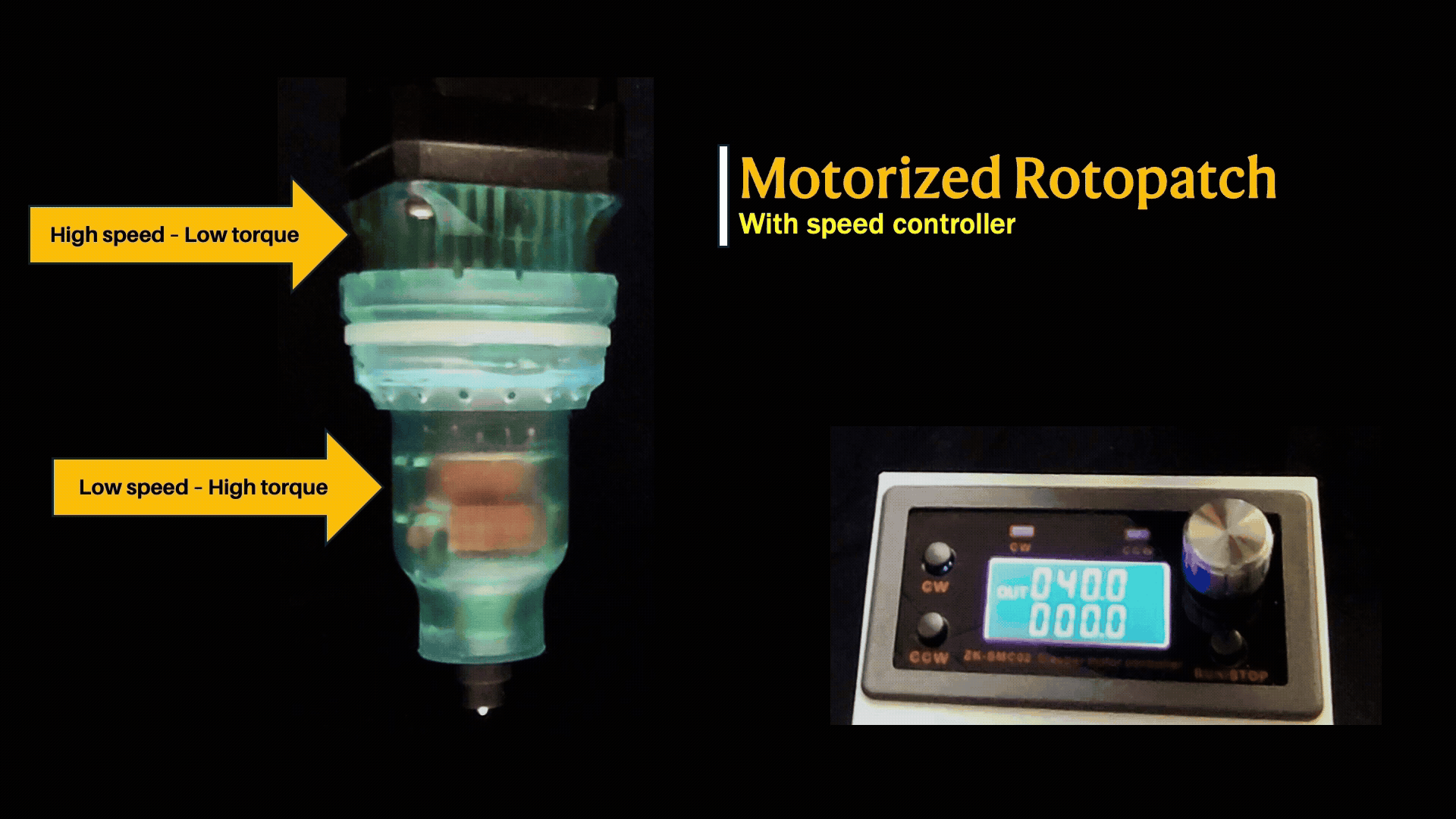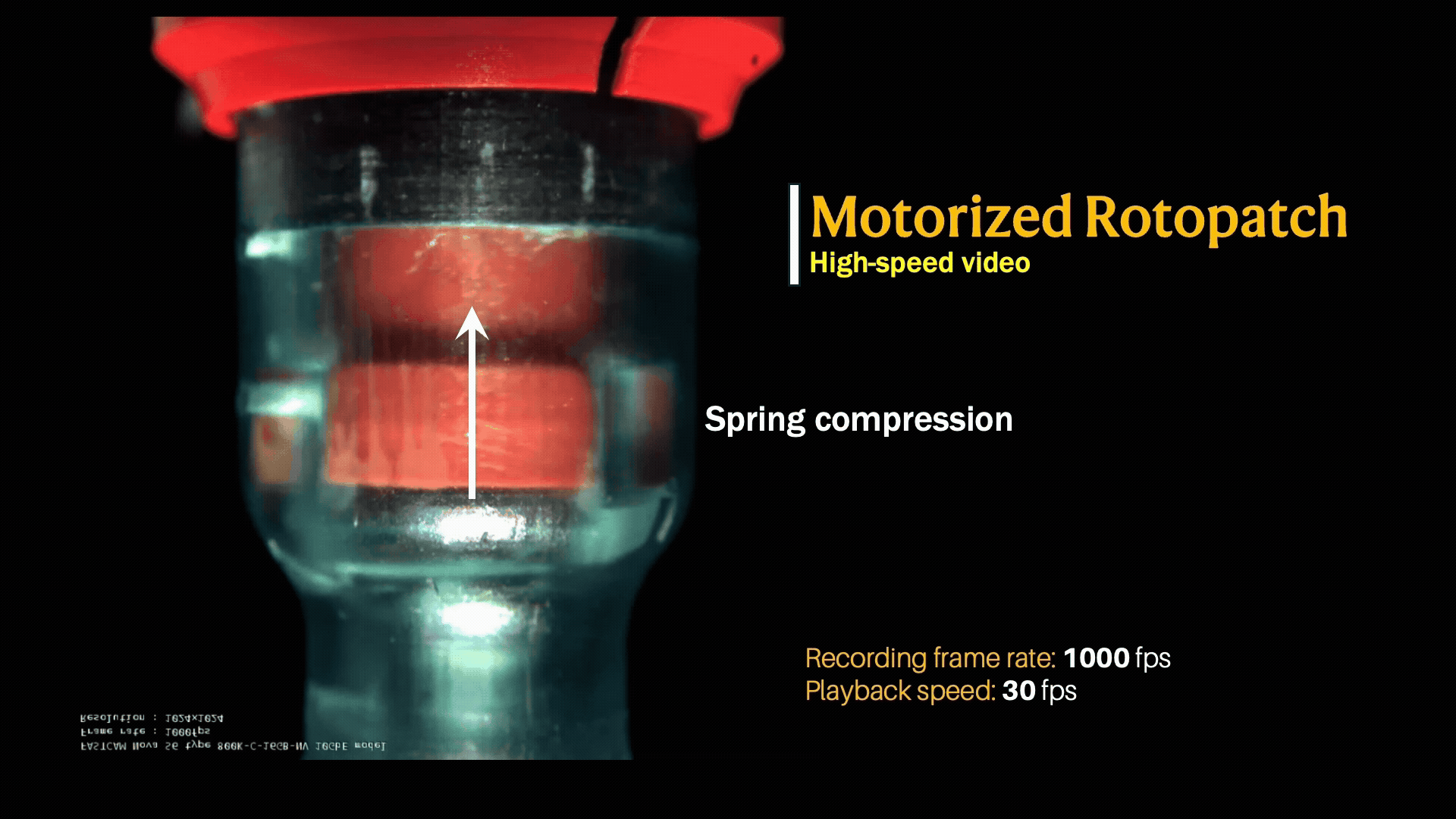RotoPatch for Gene Delivery
How can a tiny spark deliver big advances in gene therapy?
Electroporation is a powerful way to deliver nucleic acids like DNA and mRNA into cells, but most commercial systems are bulky, expensive, and painful to use. To address this, our lab first developed ePatch, an ultra-low-cost electroporator built from a piezoelectric spark element (from a BBQ lighter), paired with microneedle electrodes. The ePatch demonstrated that handheld, painless electroporation can enhance the delivery of both mRNA and plasmid DNA. However, it had a major limitation: each electrical pulse required a separate manual click, leading to user fatigue and inconsistent timing between pulses.
To overcome this, we created RotoPatch, a rotary-driven version of ePatch that delivers multiple pulses with a single motion. While ePatch required repeated manual clicks to deliver each pulse, RotoPatch uses a rotary mechanism to generate multiple pulses in a single motion. This reduces user fatigue and provides more consistent timing between pulses, which are important for reliable electroporation. In animal studies, RotoPatch enabled delivery of both mRNA and plasmid DNA into skin cells, with outcomes comparable to ePatch and other electroporation platforms, but in a format that is simpler to use and still extremely low-cost.
These are key components of the motorized RotoPatch
Major questions
Can RotoPatch deliver DNA and mRNA into cells without relying on costly or fragile carriers like viral vectors and lipid nanoparticles?
Is electroporation possible in a low-cost, handheld format instead of bulky, expensive machines?
Does a rotary design solve the limitations of ePatch by making pulse delivery easier and more consistent than repeated manual clicks?
What we’ve discovered
Turning a Twist into Pulses
With ePatch, each electric pulse required a separate manual click, which quickly led to user fatigue and inconsistent timing between pulses. We developed RotoPatch to solve this problem. By twisting the cap once, RotoPatch delivers a series of pulses in sequence, replacing repeated clicks with a single, simple motion. This rotary mechanism transforms one action into multiple high-voltage discharges, offering the same effect that previously required bulky electroporation machines.
Gentle on the Skin
We designed the device with microneedle electrodes that penetrate only the upper layers of the skin. This allowed us to localize the electric field within the epidermis and dermis, rather than deeper tissue. In our animal experiments, this configuration enabled electroporation of both mRNA and plasmid DNA, leading to measurable protein expression in mice and rats.
Making mRNA Shine
In mice, we delivered firefly luciferase mRNA intradermally and applied electroporation with RotoPatch. Bioluminescence imaging showed strong reporter expression that persisted for about 21 days, whereas injection without electroporation declined and reached baseline by day 9. Quantitative analysis showed that the piezoelectric devices significantly enhanced cumulative protein expression compared to no electroporation, with a six-fold increase for RotoPatch and a thirteen-fold increase for ePatch.
DNA Delivery Works Too
We delivered a plasmid DNA encoding green fluorescent protein (GFP) into rat skin using RotoPatch. Fluorescence imaging confirmed expression of GFP at the electroporated sites, while plasmid injection alone produced only background levels. Although the signal declined after four days, these results showed that RotoPatch can successfully deliver both DNA and mRNA in vivo.
A small spark with big potential
What excites us most is that RotoPatch can match the performance of electroporation machines that cost tens of thousands of dollars, yet it’s small enough to hold in your hand and cheap enough to make for just a few dollars. This means electroporation no longer has to be limited to high-tech labs or specialized clinics. Looking ahead, we see RotoPatch being used to deliver next-generation vaccines, support gene therapies in low-resource settings, and provide rapid response tools during future outbreaks. Our results show that sometimes the biggest advances in medicine don’t come from more complexity, but from simple, clever engineering that makes powerful technology accessible to all.
Read the paper
Low-cost, handheld, multi-pulse electroporators for simplified. Bioengineering & Translation Medicine (2025).





